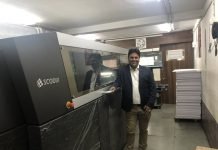By: Sandip Sen
Digital content through mobile in regional languages is spreading like wild fire. Ever since Google started enabling regional language search in India, the digital traffic has spread exponentially. Almost all regional newspapers have grown with Google language search features, which have now become a standard option in smartphones. The search engine giant started providing this feature initially during elections with the ‘Hindi me parinam dekhen’ option, which instantly broke the page view charts. This has helped many Indian startups to provide solutions to non-English speaking clients across the nation.
One of the areas where regional language digital content has picked up enormously in the last couple of years is healthcare websites. There are several major players in this field and Dainik Jagran’s onlymyhealth.com is fourth in the list with 4 million visitors each month as per data from Similarweb. Online medicine seller 1mg is third on the list with 6.45 million visitors while Practo, which provides doctor’s bookings, is second on the pecking order with 7.3 million visitors a month.
A health portal targeted at India’s hinterland
On the top of the table is MyUpchar.com with over 8.1 million visitors a month – a Hindi language website that provides education, information, advisory and online consultation in health care. We spoke to its founder Rajat Garg, a Stanford graduate who has spent a decade working in the US, first as a product manager at Amazon and then as an entrepreneur before returning to India nearly five years ago. My Upchaar has been in business only since the last two years and has received one round of funding. It has yet to generate serious revenues but has managed to rev up its visitor numbers – quickly upstaging older competitors present in this segment for 5 years and more.
Garg says, “All our visitors come through organic growth. We do not spend on advertising yet. This segment witnesses a total traffic of 30 million visitors in a month put together, so we know where to reach before trying to expand the market through advertising.” Garg goes on to explain that his focus would be to provide low cost consultancy services to users in smaller cities and expand his footprint into rural India. “We have thousands of doctors on our platform. We are doing around 1000 chat consultations per day today. We price our services at a nominal rate of Rs 20 to Rs 30 per consultation. This is much lower than competitors who charge a few hundred Rupees, close to clinic visit market rates,” says Garg, adding “We want to expand our engagement to 100,000 visitors per day as soon as possible to achieve break even.”
Twelve language service is the next step
Though each of the players have their own focus and initially had specialized revenue models, some of the interactive healthcare websites are now diversifying deliverables. “At this point despite healthy growth, competitors are stepping into rivals’ domains. Practo, which essentially provided doctor bookings, has enlarged its scope to lab services and has started also selling medicines. 1 mg is now entering the field of medical consultation as well as selling health insurance packages,” says Garg, adding that his focus is to clearly expand the language services. “We are working on 12 Indian languages, including Tamil, Telugu, Malayalam, Marathi, Bengali, Gujarati and Punjabi and should soon be able to provide more than half the nation with medical consultation digitally.”

India’s cellphone answer to barefoot doctors
Health education, information and affordable digital consultation is needed the most in small towns and rural India. With 95% of visitors on mobile, it was expected that there would be an inherent demand from smaller towns. But it does not yet happen in reality because of the lack of awareness, in the absence of advertising, explains Garg. Even social media does not help too much. Connectivity is also a problem in small towns and we are seeing just 17% adoption in 3-tier cities, almost entirely on the Jio platform.
Garg adds, “To increase adoption in the smaller towns and rural India, we are introducing voice search features. This will enable people who cannot read and write to directly speak to the doctors on the platform. We have text to voice interface already where users do not have to be able to read the responses, which is quite popular. By introducing the fully voice-enabled interface it will be possible for those who have not received formal education to access the site.”
Penetration of rural India is a long stated objective for start-ups like MyUpchar but the road is difficult and arduous. A lot of it will depend on the response from small towns and India’s hinterland to technology solutions and how far the nationwide Internet connectivity program of Digital India actually performs.
















